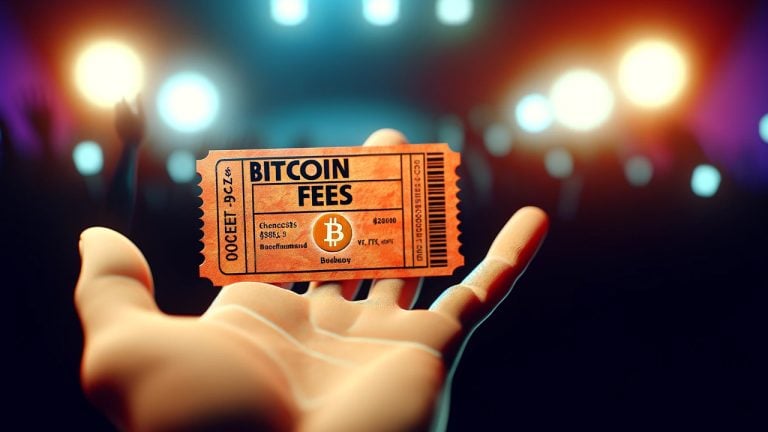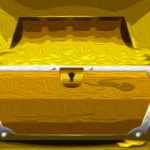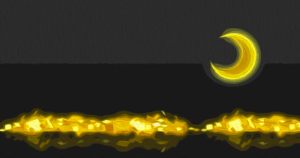
Introduction
In this article, we will take a closer look at the onchain Bitcoin fees in 2024. We will analyze the average transfer fees and transaction delays on the Bitcoin network over the past 36 days. The data reveals some interesting insights into the current state of Bitcoin transaction costs.
Bitcoin Transfer Fee Insights From the First Five Weeks of 2024
According to recent data, the average transfer fee on the Bitcoin network has consistently been above $3.68 over the last 36 days. Even the costs for median-sized transactions have not fallen below the $1.67 mark. As of February 6, 2024, there is a significant backlog of 221,799 transactions waiting for confirmation.
Although network transaction fees in 2024 are still high, they have not reached the peaks observed in mid-December 2023. For example, on December 17, 2023, the average transaction fee skyrocketed to $37.67 per BTC transfer. However, during the first five weeks of 2024, the average fee has stabilized at $9.39 per transaction across all 36 days.
The peak day for Bitcoin's network transaction fees in 2024 was January 2, with an average transfer cost of $17.32 per transaction. On the other hand, the lowest average fee in 2024 was recorded on January 28, at $3.68 per transaction. It is important to note that average-sized bitcoin fees can be influenced by significantly high or low fees, while median-sized fees provide a more accurate gauge of the typical expense for users.
Median-Sized Bitcoin Fees
Median-sized bitcoin fees, which identify the central value in a dataset of daily transaction fees when sorted, give a more precise measure of the typical expense for users. In 2024, the average median BTC fee per transaction is $4.02. The highest fee day was observed on January 14, with a median fee of $10.28 per transfer. On the other hand, the lowest median-sized fee was recorded on January 27, at $1.67 per transaction.
Currently, the fee rate for high-priority transactions at 9:00 a.m. Eastern Time (ET) on February 6, 2024, ranges between 18-29 satoshis per virtual byte. According to Mempool.space metrics, the mempool (Bitcoin's transaction queue) is congested with 221,799 pending transactions.
Weekly Transaction Fee Analysis
In the last week, the average transaction fee was approximately $8.40 per transfer. The highest fee day occurred on Saturday, February 3, with an average cost of $14.86. Conversely, the lowest fee day was on January 30, with fees dropping to $4.27 per transfer.
Conclusion
The Bitcoin network's transaction fees in 2024 have remained substantial, but they have not reached the extreme levels observed in late 2023. The average transfer fee has stabilized around $9.39 per transaction, while the median fee stands at $4.02. These fees provide insights into the typical expenses users incur when conducting Bitcoin transactions. It will be interesting to see how these fees evolve in the coming months and years.
What are your thoughts on the Bitcoin network's transaction fees in 2024? Feel free to share your opinions in the comments section below.
Frequently Asked Questions
What type of IRA is best?
When choosing an IRA, it is important to choose one that suits your lifestyle and goals. It is important to consider whether you want tax-deferred, maximized growth of your contributions, reduced taxes now and paid penalties later, or just avoid taxes.
The Roth option is a good choice if you have a lot of money saved for retirement, but not enough to invest. It's also worth considering if your plan is to work after the age of 59 1/2.
If you plan to retire early, the traditional IRA might make more sense because you'll likely owe taxes on the earnings of those funds. But if you're going to work well past age 65, the Roth IRA might make more sense since it allows you to withdraw some or all of your earnings without paying taxes.
Is it possible to hold precious metals in an IRA
The answer to that question will depend on whether the IRA owner plans to diversify his holdings to gold and/or keep them safekeeping.
He can choose to diversify if he so desires. He could either buy bars of physical gold and/or sterling from a dealer or simply sell these items back at the end. He doesn't wish to sell any of his precious metal investments. In that case, he should continue holding onto them as they would be perfectly suitable for storing within an IRA account.
What is the best precious-metal to invest?
Gold is an investment that offers high returns on its capital. It can also protect against inflation and other risks. People become more concerned about inflation and the gold price tends to go up.
It's a good idea for you to purchase futures gold. These contracts will guarantee that you will receive a specific amount of gold at an agreed price.
But gold futures may not be right for everyone. Some people prefer physical gold.
They can easily trade their gold with others. They can also make a profit by selling their gold at any time they desire.
Some people would rather not pay tax on their gold. They buy gold directly from government to do this.
This requires that you make multiple trips to the local post office. First convert any existing gold into bars or coins.
You will then need to obtain a stamp for the coins and bars. Finally, send the coins or bars to the US Mint. There they will melt the coins or bars into new ones.
These new coins, bars, and bars have the original stamps stamped onto them. These new coins and bars are legal tender.
The US Mint will not tax gold purchased directly.
What precious metal would your investment preference be?
Are gold IRAs a good option for investment?
You should buy shares in companies that produce gold. To make money in investing in gold or other precious metals, such as silver, you should purchase shares in these companies.
The downside to owning shares is that you can't directly control them.
Holding on to your stock for too many years can lead you to losing money. Stocks can fall more than their underlying asset (like, gold) when they decline. It could lead to you losing your money, instead of making it.
Second, you may miss out on potential profits if you wait until the market recovers before selling. Be patient and wait for the market's recovery before you make any profits from your gold holdings.
However, if you want to separate your investments from your financial affairs, physical gold can still be a great investment option. A gold IRA can help diversify your portfolio and protect against inflation.
Visit our website to find out more about investing in gold.
Which precious metals are best to invest in retirement?
Understanding what you have now saved and where you are currently saving money is the first step in retirement planning. If you don't know how much you currently have saved, start by taking an inventory of everything you own. This should include any savings accounts, stocks, bonds, mutual funds, certificates of deposit (CDs), life insurance policies, annuities, 401(k) plans, real estate investments, and other assets such as precious metals. Then add up all of these items to determine how much you have available for investment.
If you are under 59 1/2 you should consider opening a Roth IRA Account. A Roth IRA, on the other hand, allows you to subtract contributions from your taxable revenue. But, future earnings won't allow you to take tax deductions.
If you decide you need more money, you will likely need to open another investment account. Start with a regular broker account.
What precious metals may I allow in my IRA?
The most common precious metal used for IRA accounts is gold. You can also invest in gold bullion bars and coins.
Precious Metals are safe investments since they don’t lose value over the long-term. They can also be used to diversify investment portfolios.
Precious metals include palladium and platinum. These three metals all have similar properties. Each has its own purpose.
For example, platinum is used in making jewelry. Palladium is used to create catalysts. The production of coins is done with silver.
You should consider the amount you will spend on your gold before you decide which precious metal. It might be cheaper to buy gold at a lower price per ounce.
It is also important to consider whether you would like to keep your investment confidential. If so, then you should go with palladium.
Palladium can be more valuable than gold. However, it is also rarer. It is likely you will need to pay more.
Another important factor when choosing between gold and silver is their storage fees. The weight of gold is what you store. So you'll pay a higher fee for storing larger amounts of gold.
Silver is measured in volume. Silver is priced by volume. You will pay less to store smaller amounts.
Follow all IRS rules regarding silver and gold if you are storing precious metals within an IRA. This includes keeping track of transactions and reporting them to the IRS.
Statistics
- The IRS also allows American Eagle coins, even though they do not meet gold's 99.5% purity standard. (forbes.com)
- Silver must be 99.9% pure • (forbes.com)
- To qualify as IRA allowable precious metals and be accepted by STRATA, the following minimum fineness requirements must be met: Gold must be 99.5% pure, silver must be 99.9% pure, and platinum and palladium must both be 99.95% pure. (stratatrust.com)
- If you accidentally make an improper transaction, the IRS will disallow it and count it as a withdrawal so that you would owe income tax on the item's value and, if you are younger than 59 ½, an additional 10% early withdrawal penalty. (forbes.com)
External Links
en.wikipedia.org
takemetothesite.com
regalassets.com
wsj.com
How To
How to Open a Precious Metal IRA
Precious Metals are one of today's most desired investment vehicles. They offer investors higher returns than traditional investments, such as bonds and stocks. This is why they are so popular. It is worth your time to research and plan before you invest in precious metals. If you want to open your own precious metal IRA account, here's what you should know first.
There are two main types for precious metal accounts: paper gold and Silver certificates (GSCs), and physical precious Metals accounts. Each type of account has its own advantages and disadvantages. GSCs and physical precious metals accounts can offer diversification, but they are difficult to trade and easy to access. Read on to find out more.
Physical precious metals accounts consist of coins, bars, and bullion. This option is great for diversification, but it has its drawbacks. For instance, the costs associated with buying, storing, and selling precious physical metals are quite expensive. Moreover, their large size can be difficult to transport them from one location to another.
However, paper silver and gold certificates are relatively cheap. In addition, they're easily accessible and traded online. This makes them an ideal choice for those who don’t desire to invest in precious metallics. However, they aren't as diversified as their physical counterparts. These assets are also supported by government agencies, such as the U.S. Mint. Inflation rates could cause their value to drop.
If you open a precious metal IRA, choose the right account for your financial situation. These are some factors to consider before you do this:
- Your tolerance level
- Your preferred asset allocation strategy
- How much time will you invest?
- Consider whether you will use the funds to trade short-term.
- What type of tax treatment do YOU prefer?
- What precious metal(s), would you like to invest?
- How liquid is your portfolio?
- Your retirement age
- Where to store precious metals
- Your income level
- Your current savings rate
- Your future goals
- Your net worth
- Any other special circumstances that may impact your decision
- Your financial overall situation
- You choose between paper and tangible assets
- Your willingness and ability to take risks
- Your ability to manage losses
- Your budget constraints
- Financial independence is what you want
- Your investment experience
- Your familiarity with precious and rare metals
- Your knowledge of precious metals
- Your confidence and faith in the economy
- Your personal preferences
Once you have decided which type of precious-metal IRA is best for you, it's time to open an account at a reputable dealer. These companies can also be found online, through word-of mouth or referrals.
Once you have opened your precious-metal IRA, it is time to decide how much you want to deposit. There are different minimum deposits for precious metal IRA accounts. Some require only $100, while others will allow you to invest up to $50,000.
You can invest as much or as little money in your precious metal IRA as you like. You should choose a higher initial deposit if you want to build wealth over time. A lower initial deposit may be better if you plan to invest smaller amounts of money each month.
As far as the actual precious metals used in your IRA go, you can purchase any number of different types of investments. The most common include:
- Bullion bars. Rounds, and gold coins.
- Silver – Rounds or coins
- Platinum – Coins
- Palladium – Round and bar forms
- Mercury – Round and Bar Forms
—————————————————————————————————————————————————————————————-
Based on [POSTTITLE]
by [POSTAUTHOR]














